Jakob Boehme’s Mystical Theology and Its Resonance with Jungian Psychology
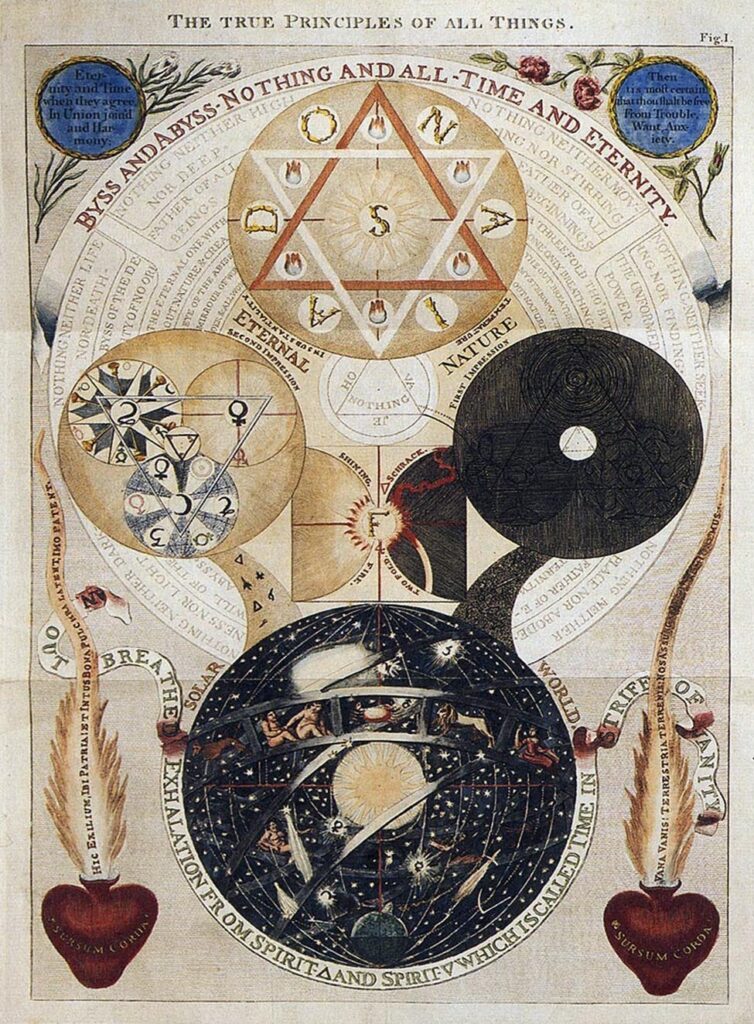
“For according to the outward man, we are in this world, and according to the inward man, we are in the inward world…. Since then we are generated out of both worlds, we speak in two languages, and we must be understood also by two languages.”
― Jacob Boehme
Jacob Boehme, a 17th-century German mystic and philosopher, developed a profound and influential system of mystical theology and cosmology that has had a significant impact on Western spirituality and depth psychology. In particular, Boehme’s ideas have been recognized as a precursor to the psychological theories of Carl Jung, especially his concept of the individuation process. This blog post will explore the key elements of Boehme’s mystical theology and cosmology, and examine how they relate to Jungian psychology and the individuation process.
Boehme’s Dynamic Vision of God:
At the core of Boehme’s theology is a dynamic and polarized understanding of the divine nature. For Boehme, God is not a static, monolithic entity, but rather a living, self-differentiating unity that encompasses both light and darkness, good and evil. This dynamic vision of God is characterized by a constant interplay of opposites, a process of self-manifestation and self-revelation that gives rise to the rich diversity and complexity of the created world.
Boehme’s understanding of the divine nature has important implications for how we understand the nature of reality and the place of the human soul within it. It suggests that the world is not a simple, black-and-white realm of absolute good and evil, but rather a complex tapestry woven from the dynamic interplay of light and dark, a process in which the human soul plays a crucial role.
The Three Principles and the Structure of Reality:
Boehme’s cosmology is based on the idea of the “Three Principles,” which he saw as the fundamental forces or qualities that underlie all of reality. These principles are:
1. The dark principle of contraction and limitation
2. The light principle of expansion and freedom
3. The principle of the reconciliation of opposites, associated with the figure of Christ
For Boehme, these three principles are not abstract concepts, but living realities that shape and structure the entire cosmos. They are the basic building blocks of creation, the dynamic forces that give rise to the manifold forms and phenomena of the world.
The dark principle, in particular, plays a crucial role in Boehme’s cosmology. He sees it not as an evil force, but as a necessary aspect of the divine nature, the principle of contraction and limitation that allows for the emergence of distinct, individual forms. Without the dark principle, Boehme suggests, there could be no creation, no manifestation of the divine in the world.
The Relevance of Boehme’s Ideas for Jungian Psychology:
Carl Jung, one of the founders of depth psychology, was deeply influenced by Boehme’s mystical theology and cosmology. Jung saw in Boehme’s ideas a powerful articulation of the psychological process of individuation, the journey of the soul towards wholeness and integration.
For Jung, the individuation process is a spiritual as well as a psychological journey, one that involves confronting and integrating the shadow, the repressed or unconscious aspects of the self. This process of integration is deeply resonant with Boehme’s understanding of the interplay of light and dark within the divine nature and the human soul.
Moreover, Jung’s concept of the Self, the archetypal image of wholeness and totality that guides the individuation process, bears a striking resemblance to Boehme’s vision of Christ as the reconciling principle that unites the opposites of light and dark, good and evil. Both Jung and Boehme see the path to wholeness and spiritual transformation as one that leads through the reconciliation of opposites, the integration of the shadow, and the realization of the divine within the human soul.
The mystical theology and cosmology of Jacob Boehme offer a rich and profound vision of the nature of God, the structure of reality, and the journey of the human soul. Boehme’s ideas have had a significant impact on Western spirituality and depth psychology, particularly the theories of Carl Jung and his concept of the individuation process.
By exploring the parallels between Boehme’s mystical vision and Jung’s psychological insights, we can gain a deeper understanding of the spiritual dimensions of the individuation process and the role of the human soul in the larger cosmic order. Boehme’s dynamic, polarized understanding of the divine nature and the interplay of light and dark within the human soul offers a powerful framework for navigating the challenges and opportunities of the spiritual path, and for realizing the divine potential within each of us.
Jung’s Psychology and the Individuation Process
Carl Jung, who was deeply influenced by Boehme’s ideas, saw a close parallel between Boehme’s mystical theology and his own psychological theories. Jung’s concept of the individuation process, in particular, bears a striking resemblance to Boehme’s understanding of the soul’s journey towards union with the divine.
According to Jung, individuation is the process by which an individual becomes a psychologically whole and integrated person, able to balance and harmonize the various aspects of their personality. This process involves confronting and integrating the shadow, the repressed or unconscious aspects of the self, as well as developing a relationship with the Self, the archetypal image of wholeness and totality.
Jung believed that the individuation process is a spiritual as well as a psychological journey, one that leads ultimately to a sense of meaning, purpose, and connection with a larger cosmic order. In this sense, Jung’s understanding of the psyche is deeply resonant with Boehme’s vision of the soul’s relationship to the divine.
Implications for Psychology and Spirituality
The resonance between Jakob Boehme’s mystical theology and Carl Jung’s psychological theories has significant implications for our understanding of the relationship between spirituality and psychology. Their work suggests that the human psyche is not merely a product of individual experience and conditioning, but is also shaped by universal, archetypal patterns that connect us to a larger spiritual reality.
This perspective challenges the reductionistic and materialistic assumptions of much of modern psychology, which tends to view the psyche as a purely individual and biological phenomenon. Instead, Boehme and Jung invite us to consider the ways in which our psychological experiences are intimately connected to spiritual dimensions of reality.
In the context of psychotherapy, this perspective suggests that true healing and transformation require not only an exploration of individual psychology, but also a recognition of the spiritual and archetypal dimensions of the psyche. By working with dreams, symbols, and mythological motifs, therapists can help clients connect with the deeper layers of their being and access the wisdom and guidance of the spiritual realm.
Moreover, Boehme and Jung’s ideas have important implications for the development of a more integrative and holistic approach to spirituality. Rather than viewing spirituality as a separate realm from psychology and the material world, their work suggests that these dimensions are intimately interconnected and mutually illuminating.
Boehme’s vision of God as a dynamic, polarized unity that encompasses both light and darkness, good and evil, is particularly relevant in this regard. This perspective challenges the dualistic and moralistic tendencies of much of traditional religion, and invites us to embrace a more nuanced and paradoxical understanding of the divine.
Similarly, Jung’s concept of the shadow, the repressed or unconscious aspects of the self, suggests that true spiritual growth and transformation require a willingness to confront and integrate the darker aspects of our nature. Rather than seeking to transcend or escape from the realm of matter and embodiment, Boehme and Jung encourage us to engage fully with the complexity and ambiguity of the human condition.
Jakob Boehme’s mystical theology and its resonance with Carl Jung’s psychological theories offer a rich and provocative framework for exploring the relationship between spirituality and psychology. Their work challenges us to reconsider the nature of the psyche and its relationship to the divine, and to embrace a more integrative and holistic approach to both spirituality and psychology.
By recognizing the ways in which our individual experiences are shaped by universal, archetypal patterns and spiritual realities, we can develop a more profound and transformative understanding of the human condition. This understanding can inform the practice of psychotherapy, as well as the broader project of personal and collective spiritual growth and awakening.
As we continue to grapple with the challenges and complexities of the modern world, the visionary insights of Jakob Boehme and Carl Jung offer a valuable resource for deepening our understanding of ourselves, our world, and the ultimate nature of reality. By engaging with their ideas and integrating them into our own lives and work, we can participate in the ongoing process of human transformation and spiritual evolution.
Implications of Boehme’s Thought on Trauma Treatment:
Jakob Boehme’s mystical theology, with its emphasis on the dynamic interplay of opposites and the journey towards wholeness and union with the divine, offers a profound framework for understanding and working with trauma in the context of psychotherapy.
Trauma, by its very nature, involves a shattering of one’s sense of self, safety, and meaning. It often leads to a profound disconnection from one’s own inner experience, as well as from the larger world and spiritual dimensions of life. Traumatized individuals may feel fragmented, overwhelmed, and trapped in a state of chaos and darkness, unable to access their own inner resources for healing and growth.
Boehme’s vision of God as a polarized unity that encompasses both light and darkness, good and evil, can provide a powerful context for making sense of the traumatic experience. His theology suggests that the existence of darkness and suffering is not a sign of God’s absence or indifference, but rather an integral part of the divine nature and the process of spiritual transformation.
This perspective can help individuals to reframe their traumatic experiences, not as a punishment or a sign of personal deficiency, but as a difficult yet potentially transformative initiation into a deeper level of spiritual reality. By embracing the darkness and chaos of trauma, rather than seeking to avoid or transcend it, individuals can begin to integrate their experiences into a larger narrative of meaning and purpose.
Moreover, Boehme’s emphasis on the importance of the “Three Principles” – the dark principle of contraction and limitation, the light principle of expansion and freedom, and the principle of the reconciliation of opposites – can provide a useful framework for understanding the dynamics of trauma and the process of healing.
Traumatic experiences often involve a profound contraction and limitation of one’s sense of self and possibilities, as well as an overwhelming sense of vulnerability and exposure. The process of healing from trauma, in turn, requires a gradual expansion and reclaiming of one’s inner world, as well as a willingness to face and integrate the painful experiences that have been split off or dissociated.
This process of integration and reconciliation is at the heart of Boehme’s theology, and is mirrored in the process of individuation described by Jung. By learning to hold and contain the opposites within oneself – the light and the dark, the good and the evil, the masculine and the feminine – individuals can begin to access a deeper sense of wholeness and resilience.
In the context of trauma therapy, this may involve working with the different parts or voices within oneself, and learning to cultivate a compassionate, witnessing presence that can hold the complexity and ambiguity of one’s inner experience. It may also involve exploring the spiritual and existential dimensions of the traumatic experience, and seeking to find meaning and purpose in the midst of suffering.
Boehme’s theology also emphasizes the importance of surrender and grace in the process of spiritual transformation. He suggests that, ultimately, it is not through our own efforts or will that we are able to achieve wholeness and union with the divine, but rather through a process of letting go and opening ourselves to a higher power.
This perspective can be particularly helpful for individuals struggling with the shame, guilt, and self-blame that often accompany traumatic experiences. By learning to surrender to a larger spiritual reality, and to trust in the inherent wisdom and compassion of the universe, individuals can begin to let go of their attachment to control and mastery, and to embrace a more fluid and dynamic understanding of the self.
Ultimately, the goal of trauma therapy from a Boehmian perspective is not merely to alleviate symptoms or achieve a state of psychological adjustment, but to facilitate a deeper process of spiritual awakening and transformation. By learning to embrace the full spectrum of one’s inner experience, and to find meaning and purpose in the midst of suffering, individuals can begin to access the innate wisdom and resilience of the soul, and to participate more fully in the larger unfolding of the divine nature.
While Boehme’s theology may seem esoteric or abstract, its insights into the nature of the self and the process of spiritual transformation have profound implications for the understanding and treatment of trauma. By providing a framework for integrating the dark and light aspects of the psyche, and for finding meaning and purpose in the midst of suffering, Boehme’s ideas can help individuals to navigate the difficult journey of trauma recovery, and to access the innate wisdom and resilience of the soul.
Overlap with Boehme and Psychotherapy
Jakob Boehme’s mystical theology and its resonance with Jungian psychology share significant commonalities with several contemporary models of psychotherapy, including Gestalt therapy, Hakomi therapy, and Internal Family Systems (IFS) therapy. While these approaches may differ in their specific techniques and theoretical frameworks, they all emphasize the importance of exploring the deeper layers of the psyche and facilitating a process of integration and wholeness.
Gestalt Therapy:
Gestalt therapy, founded by Fritz Perls, emphasizes the importance of present-moment awareness, direct experience, and the integration of mind, body, and emotion. Like Boehme and Jung, Gestalt therapists view the psyche as a dynamic, self-regulating system that seeks to maintain balance and wholeness.
In Gestalt therapy, the process of healing and growth involves becoming aware of and accepting all aspects of oneself, including the parts that may be repressed or disowned. This emphasis on integration and the reconciliation of opposites resonates with Boehme’s vision of the divine as a dynamic unity that encompasses both light and darkness.
Hakomi Therapy:
Hakomi therapy, developed by Ron Kurtz, is a mindfulness-based, somatic approach to psychotherapy that emphasizes the importance of present-moment experience and the exploration of the unconscious mind. Hakomi therapists view the psyche as a complex system of interconnected parts, each with its own unique qualities and functions.
Like Boehme and Jung, Hakomi therapy recognizes the existence of universal, archetypal patterns that shape our psychological experiences. Hakomi therapists use mindfulness and somatic techniques to help clients explore these patterns and bring them into conscious awareness, facilitating a process of integration and transformation.
Internal Family Systems (IFS) Therapy:
IFS therapy, created by Richard Schwartz, is a model of psychotherapy that views the psyche as a system of distinct sub-personalities or “parts,” each with its own unique qualities, motivations, and beliefs. IFS therapy emphasizes the importance of developing a compassionate, non-judgmental relationship with all aspects of the self, including the parts that may be exiled or burdened.
This emphasis on the multiplicity of the psyche and the importance of inner dialogue and integration resonates with Boehme’s vision of the soul as a microcosm of the divine, containing a diversity of forces and qualities. Like Boehme and Jung, IFS therapy recognizes the existence of a higher Self or spiritual center that can facilitate the process of healing and integration.
In all of these approaches, the goal of therapy is not merely to alleviate symptoms or achieve a state of psychological adjustment, but to facilitate a deeper process of self-discovery, integration, and spiritual growth. By exploring the inner world of the psyche and developing a more compassionate and accepting relationship with all aspects of the self, individuals can access the wisdom and guidance of their own inner knowing and connect with a larger sense of meaning and purpose.
Jakob Böhme’s Life and Work
Jakob Böhme (1575-1624) was a German Christian philosopher, theosopher, and mystic who had a profound influence on Western esotericism and Christian theosophy. His visionary writings and metaphysical speculations have had a lasting impact on various intellectual and spiritual traditions.
Early Life and Awakening
Jakob Böhme was born on April 24, 1575, in the village of Altseidenberg (now Görlitz, Germany). He grew up in a poor family of weavers and received little formal education. Despite his humble beginnings, Böhme’s life took a transformative turn in 1600 when he experienced a series of mystical visions and revelations. These experiences fundamentally altered his understanding of the divine and the nature of existence, setting him on a path of spiritual exploration and philosophical inquiry.
Writings and Influence
Inspired by his initial visions, Böhme began writing and publishing his metaphysical and theological works, often under the pseudonym “Teutonicus Philosophus.” His first major work, “Aurora” (1612), laid the foundation for his cosmological and theological system, which skillfully blended elements of Christian mysticism, Neoplatonism, and Hermeticism. In this treatise, Böhme explored the nature of God, the origin of the universe, and the relationship between the divine and the human.
Böhme’s subsequent works, such as “The Three Principles of the Divine Essence” (1619), “The Threefold Life of Man” (1620), and “The Signature of All Things” (1621), further developed his unique metaphysical vision. In these writings, he delved into topics such as the nature of good and evil, the process of spiritual regeneration, and the correspondences between the macrocosm and the microcosm. Böhme’s ideas were characterized by a dynamic and dialectical understanding of reality, in which the divine was seen as a self-unfolding process that manifested itself through the interplay of opposites.
Böhme’s writings quickly gained a following among both admirers and critics, particularly within Protestant and Catholic theological circles. His unorthodox ideas and visionary style of writing attracted the attention of scholars, clergy, and laypeople alike, sparking intense debates and discussions about the nature of God, the human soul, and the path to spiritual enlightenment.
Persecution and Later Years
Böhme’s unconventional theological views and growing influence did not go unnoticed by the authorities in Görlitz. In 1613, he was summoned before the local council and forced to recant his beliefs under threat of exile. Following this incident, Böhme went into exile for several years, during which time he continued to write and refine his philosophical and spiritual ideas.
In 1624, Böhme returned to Görlitz, where he spent the final months of his life. Despite the ongoing persecution and censorship of his works, he remained committed to his spiritual vision and continued to write until his death on November 17, 1624, at the age of 49.
Legacy and Influence
Jakob Böhme’s writings had a far-reaching impact on the development of Western esotericism, Christian theosophy, and the emergence of Romanticism. His ideas influenced a diverse range of thinkers, including the philosopher Friedrich Schelling, the poet and artist William Blake, and the renowned physician and alchemist Paracelsus. Böhme’s concept of the divine as a dynamic, self-unfolding process, and his emphasis on the spiritual and mystical dimensions of human experience, struck a chord with generations of philosophers, theologians, and spiritual seekers.
Böhme’s legacy extends beyond his immediate historical context, as his works have continued to be studied and appreciated by scholars and practitioners of Western esotericism. He is widely regarded as a seminal figure in the history of Western spirituality, serving as a crucial link between the medieval alchemical and Hermetic traditions and the emergence of modern Western occultism and alternative spirituality movements.
In many ways, Jakob Böhme’s life and work stand as a testament to the enduring power of mystical experience and the human quest for spiritual understanding. His visionary insights and metaphysical speculations have left an indelible mark on the Western spiritual and intellectual landscape, inspiring countless individuals to explore the depths of their own inner lives and to seek a more direct and intimate connection with the divine.
Major Published Works by Jakob Böhme
Aurora or The Morning Redness (Aurora oder Morgenröte im Aufgang, 1612)
This seminal work laid the foundation for Böhme’s cosmological and theological system, exploring the nature of God, the origin of the universe, and the relationship between the divine and the human.
The Three Principles of the Divine Essence (De Tribus Principiis, 1619)
In this treatise, Böhme elaborated on his understanding of the three fundamental principles that underlie the divine essence: the dark principle, the light principle, and the principle of the union of opposites.
The Threefold Life of Man (Vom dreyfachen Leben des Menschen, 1620)
This work explores the nature of human existence, focusing on the interplay between the physical, psychological, and spiritual dimensions of life.
The Signature of All Things (De Signatura Rerum, 1621)
Böhme’s most famous work, in which he develops his doctrine of correspondences, arguing that the visible world is a manifestation of the invisible spiritual reality.
The Way to Christ (Weg zu Christo, 1624)
A collection of spiritual writings and meditations, focusing on the path of spiritual regeneration and the attainment of union with the divine.
Other notable works by Böhme include:
Forty Questions on the Soul (Vierzig Fragen von der Seele, 1620)
The Incarnation of Jesus Christ (Von der Menschwerdung Jesu Christi, 1620)
The High and Deep Searching of the Threefold Life of Man Through (or According to) the Three Principles (Vom hohen und tiefen Grunde der Dreyfaltigen, Göttlichen Wesen, 1620)
The Tabular Process (Tabulatur-Proceß, 1623)
The Supersensual Life (Das Supernaturale Leben, 1624)
A Dialogue between a Scholar and his Master Concerning the Soul’s Regeneration (Ein Gesprach einer erleuchteten und einer unerleuchteten Seele, 1624)
The Mysterium Magnum: An Exposition on the First Book of Moses Called Genesis (Mysterium Magnum, 1623)
The Election of Grace (Gnadenwahl, 1623)
Six Theosophic Points and Other Writings (Sechs Theosophische Punkte, 1620)
The Great Six Points (Von den sechs Theosophischen Punkten, 1620)
The Clavis (Die Clavis oder Schlüssel etlicher Hauptschriften, published posthumously in 1672)
These works, along with Böhme’s other writings and correspondence, form a rich and complex body of work that continues to inspire and challenge readers to this day. His unique blend of Christian mysticism, Neoplatonic philosophy, and Hermetic thought has earned him a place among the most influential and original thinkers in the history of Western spirituality.
Read More Depth Psychology Articles:
Taproot Therapy Collective Podcast
Mystics and Gurus
Bibliography:
- Boehme, J. (1612). Aurora or The Morning Redness.
- Boehme, J. (1619). The Three Principles of the Divine Essence.
- Boehme, J. (1620). The Threefold Life of Man.
- Boehme, J. (1621). The Signature of All Things.
- Boehme, J. (1624). The Way to Christ.
Further Reading:
- Weeks, A. (1991). Boehme: An Intellectual Biography of the Seventeenth-Century Philosopher and Mystic. State University of New York Press.
- O’Regan, C. (2002). Gnostic Apocalypse: Jacob Boehme’s Haunted Narrative. State University of New York Press.
- Stoudt, J.J. (1957). Sunrise to Eternity: A Study in Jacob Boehme’s Life and Thought. University of Pennsylvania Press.
- Hessayon, A. & Apetrei, S. (Eds.) (2013). An Introduction to Jacob Boehme: Four Centuries of Thought and Reception. Routledge.
- Jung, C.G. (1960). Mysterium Coniunctionis. Princeton University Press.
- Von Franz, M-L. (1980). Alchemical Active Imagination. Spring Publications.
- Edinger, E.F. (1985). Anatomy of the Psyche: Alchemical Symbolism in Psychotherapy. Open Court.
- Versluis, A. (1999). Wisdom’s Children: A Christian Esoteric Tradition. State University of New York Press.
- McGinn, B. (2016). Mysticism in the Reformation (1500-1650). Herder & Herder.
- Faivre, A. (1994). Access to Western Esotericism. State University of New York Press.
- Hanegraaff, W.J. (2012). Esotericism and the Academy: Rejected Knowledge in Western Culture. Cambridge University Press.
- Goodrick-Clarke, N. (2008). The Western Esoteric Traditions: A Historical Introduction. Oxford University Press.
- Levine, P.A. (2010). In an Unspoken Voice: How the Body Releases Trauma and Restores Goodness. North Atlantic Books.
- Van der Kolk, B. (2014). The Body Keeps the Score: Brain, Mind, and Body in the Healing of Trauma. Viking.
- Schwartz, R.C. (1995). Internal Family Systems Therapy. Guilford Press.
Did you enjoy this article? Checkout the podcast here.

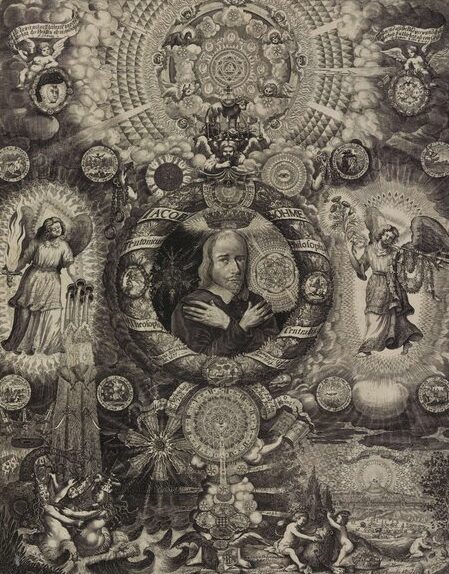















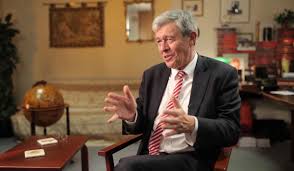

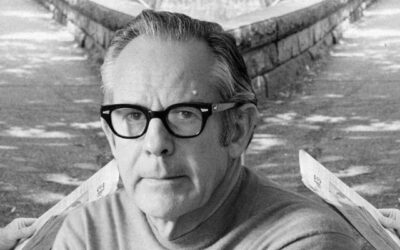
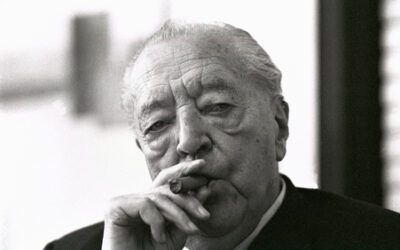





0 Comments